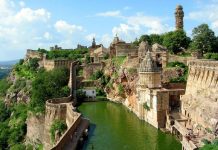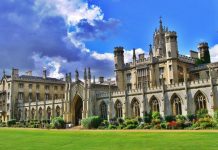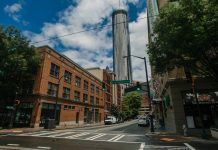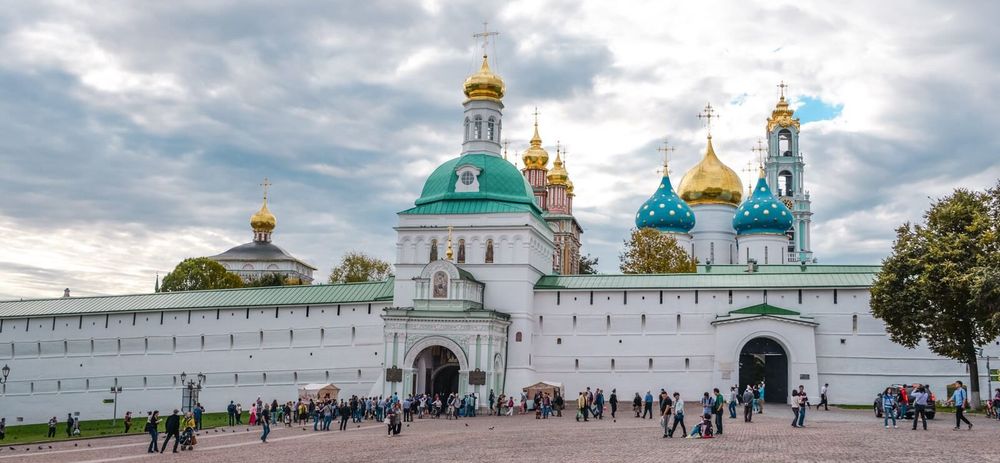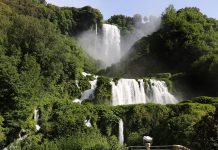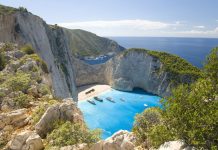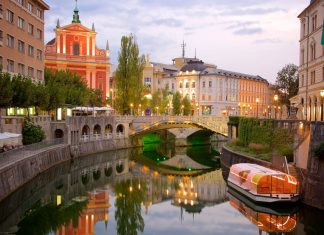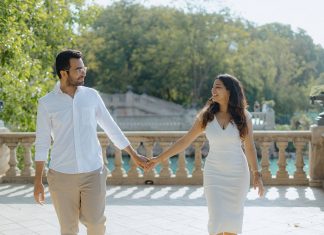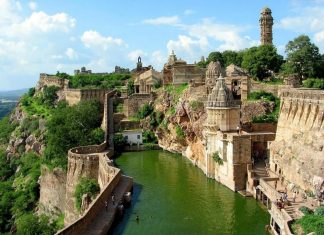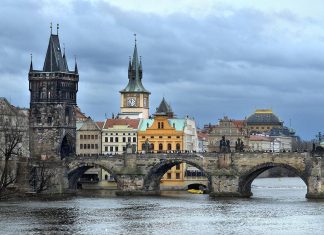Ta Prum
The former Buddhist monastery and university amazes tourists with its colossal size. It consists of huge stone and brick buildings and a large number of statues. Ta Prum is located in Siem Reap, a province of Cambodia. Its original name is Rajavihara, which means “royal temple”. This monastery was built by King Jayavarman VII in the 12th – early 13th centuries . At that time, the country was flourishing, and the monastery was developing rapidly, turning into a rich city. In those days, temples were different-sized cities “in themselves”, which had a treasury and their own economy. The Khmer king dedicated this temple to his mother.
When the empire was declining, the temple did not give up its positions for a long time and was a fairly well-off city. Despite this, in the XV century people left the area, leaving the fallen country alone with nature. After standing for centuries, the temple soon turned into ruins, similar to sand-bleached gnawed bones, striking with their former giant power. The jungle grew on his “nape”, bizarrely taking root through monuments to the former gods.
The temple was not restored for a long time, which was explained by the great desire of travelers to come into contact with the bygone era of the kingdom of stone and jungle, untouched by the human hand. Of course, the temple is not so much a “stone” as the history and religious heritage of Buddhism itself. Angelina Jolie climbed the mighty roots and structures of the temple complex in her acclaimed film “Lara Croft”. The picture introduced the mass audience to Ta Prum, charging people with the desire to see the miracle of world urban planning live.
There is a rumor that a picture resembling a stegosaurus was found on the wall of Ta Prum, among many carved images. Which leads ufologists and esotericists to various guesses and interpretations. For example, that people lived in the neighborhood with animals resembling dinosaurs, or the construction of the temple dates back much earlier than the XII century.
Kaaba
The Kaaba was planned as a rectangular structure created inside the courtyard of the Masjid al-Haram mosque in Mecca. Today we can see a cube covered with black cloth, towards which all Muslims turn at least five times a day during prayer. But the Kaaba was not always black. Initially, its walls were multicolored. The tradition of covering the Kaaba with cloth with gold inscriptions originated in the time of the Abassids. Inside, the Kaaba is made of white marble.
In ancient times there were two doors for entry and exit, respectively. There was a window. To date, only a windowless cube with a single door has reached us. Once upon a time, anyone had the right to enter and pray in the Kaaba. Moreover, you can pray in Bayt al-Atek in any direction. This ritual was performed twice a week. According to today’s rules, the Kaaba is open only twice a year, and only special pilgrims can enter it.
Borobudur
A unique Buddhist temple, which has no rivals in size on Earth. And the temple is really huge. It is located 42 km from Jakarta, Indonesia. There is no known date of construction of the temple. It is only assumed that the religious monument was built within a hundred years between the XVII-XVIII centuries. Recently, the temple was abandoned due to the increased influence of Islam on the area. For many centuries, this giant was covered with ash from volcanoes spewing their fiery entrails. Like Ta Prum, the temple was once conquered by tropical vegetation. Borobudur was discovered in 1814 by Thomas Raffles, the future sponsor of the purification of the temple from vegetation of all kinds. Since 1814, the temple has undergone many reconstructions, and this continues to this day.
The temple, like an open stone book, is a bas-relief narrative of the teachings of the Buddha, where each terrace or wall shows many lives and various forms of Sidhartha’s acceptance before enlightenment and return to earth in the form of a Buddha. Statuettes of the Great Teacher can be found everywhere on the territory of the building. The symbol of enlightenment – the Central stupa – is located in the main part of the temple. Only Buddhist monks can pass through it. In the temple, in addition to the Central stupa, there are 72 smaller ones. There is a “Buddha’s dwelling” – a special stupa with a statue of Buddha in the lotus position, according to legend, if you touch the feet of the statue and make a wish, it will certainly come true.
Las Lajas Church
The Cathedral of Las Lajas, built in the Neo-Gothic style, is located above the Guatara River. The cathedral serves as a meeting place for pilgrims on their way to the miraculous rock icon of the face of the Virgin Mary in a cave nearby. The image is called Senora de las Lajas, and according to legend, the face of the Mother of God appeared in 1754 to a deaf-mute Indian woman who came to these places, and gave her a voice and hearing. The icon is healing, as evidenced by a large number of plaques around the church with thanks for help and recovery.
Since the events described in the legend, a huge number of pilgrims from South America and around the world have flocked to the cave. For the convenience of believers, later, in 1794, a chapel was built, where people brought flowers and put candles, and later the cathedral itself was built. Until now, the church has been rebuilt three times. In 1948, an arched bridge was built, offering a wonderful view of the rocky terrain where the shrine is located. The cathedral symbolizes peace between Ecuador and Colombia, setting an example to other countries.
Hagia Sophia
The temple was erected within 5 years by 10,000 workers during the prosperity of Byzantium under Emperor Justinian. The cathedral is also called Hagia Sophia or the Great Church. The Constantinople Church of St. Sophia was built in order to outshine the temple of King Solomon in Jerusalem with its greatness. The cathedral itself is made of brick, but lined with various expensive materials and jewelry. The temple was built as a Christian church. It became a mosque after the conquest of Constantinople by the Turks. Christian religious images were hidden under the plaster.
St. Peter’s Cathedral
The white tent of the Catholic church in the Vatican shines with its beauty against the background of Roman landscapes. St. Peter’s Cathedral heads all Catholic churches in the world. It was built more than five centuries ago. In those ancient times, a Roman circus was located on the site of the temple, where Christians were executed. In 67, Saint Peter was brought to execution. The Apostle Peter asked only one thing, so that his execution would not resemble the death of Jesus Christ. His request was fulfilled by crucifying St. Peter upside down. Emperor Constantine decided to honor the memory of St. Peter by building a basilica at the place of execution. Already in 1452, the Pope began the construction of the main Catholic symbol.
Sanctuary of Apollo
In central Greece, the most iconic sanctuary for the Greeks of the 1500 century BC to the god Apollo is located. Here, in a small room with an Oracle, one of the famous priests who spoke to the gods worked and lived. The “Aditon” (as this room was called) could only be entered by the priest of Pythias, named after Pythonus, who was killed by Apollo.
Mahabodhi Temple
The dream of all Buddhists is to come or come to the Mahabodhi Temple. This is the great temple of Awakening, where the whole thousand Buddhas have awakened and will awaken. People come here for a blessing, if in a Christian way, or for another step before Awakening, a connection with the place, if in a Buddhist way. Ordinary tourists are attracted here by the architecture, history of the place and magnificent landscapes. Often in the circle of people you can see celebrities.
Luxor Temple
A small temple has settled on the mountainside of the eastern bank of the Nile. Until the XIX century, the Luxor temple was hidden from prying eyes under layers of sand, excavations are underway to this day. Impressive are the huge statues of deities, columns that have been propping up the temple for centuries, hieroglyphs with not fully understood meaning and obelisks.
Notre Dame Cathedral
Towering with the splendor of Gothic architecture over the island of Cité in Paris, Notre Dame Cathedral is one of the most famous temples. The best architects under the leadership of Archbishop Maurice de Sully worked on the building from 1160 to 1345.


